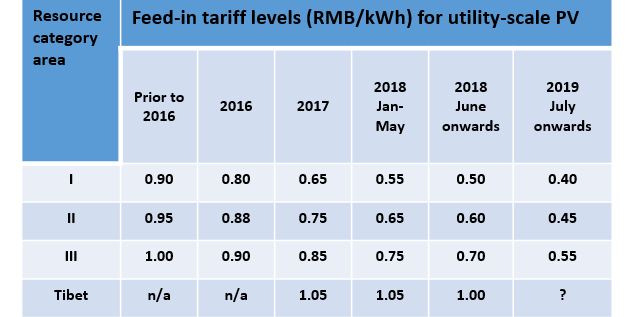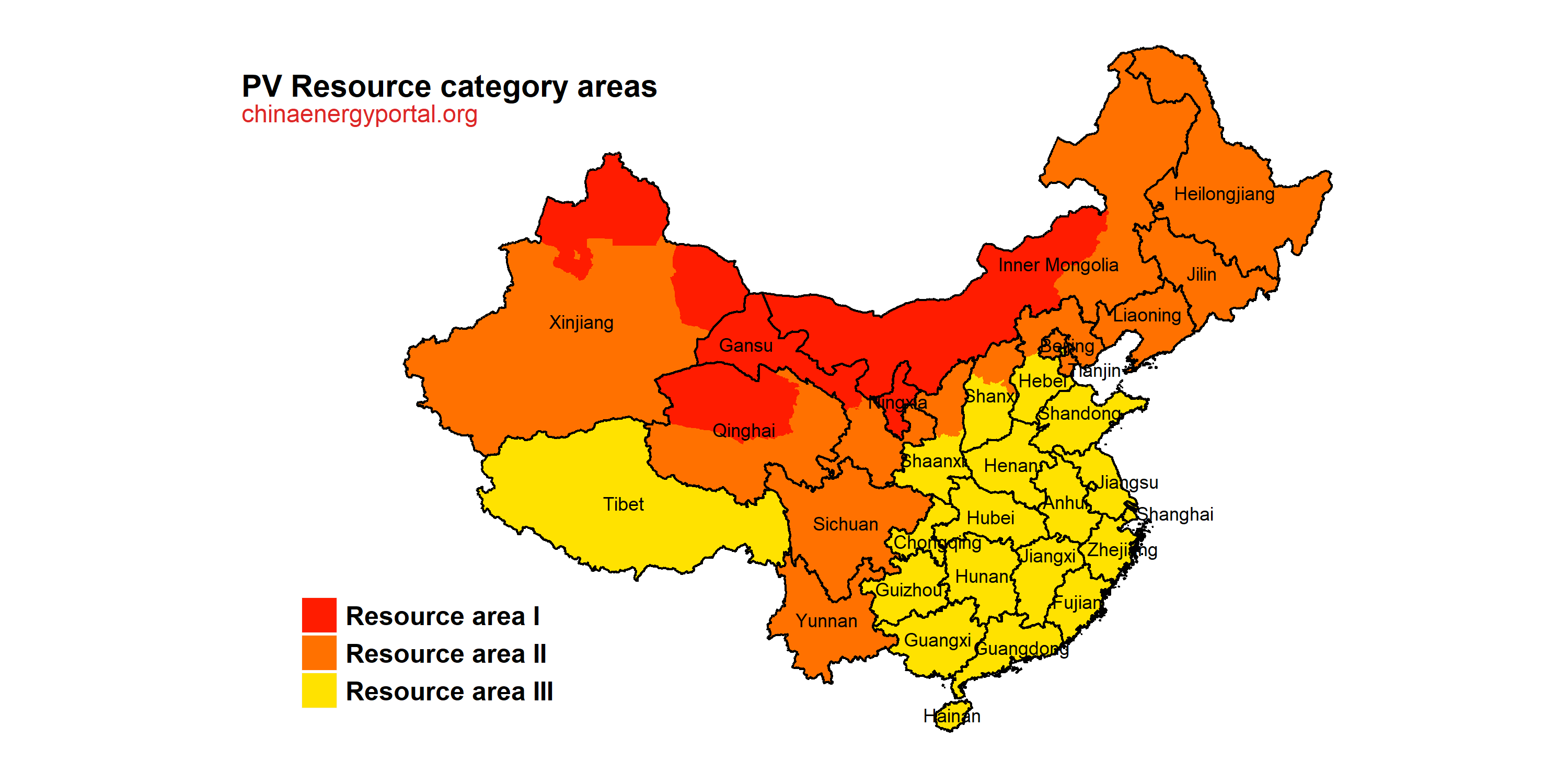All translations on this site are unofficial and provided for reference purpose only.
To view translations, select English under Step 1 (at the right of the screen). Not every item is (fully) translated. If you’re still seeing Chinese, you can use machine translation, under Step 2, to make sense of the rest.
Want to help translate? Switch to English under Step 1, and check ‘edit translation’ (more explanation in the FAQ). Even if you translate just a few lines, this is still very much appreciated! Remember to log in if you would like to be credited for your effort. If you’re unsure where to start translating, please see the list of Most wanted translations.
Circular on improving the Feed-in Tariff mechanism for PV power generation
Original title: 国家发展改革委关于完善光伏发电上网电价机制有关问题的通知 发改价格〔2019〕761号
Links: Source document (in Chinese) (link). Earlier PV Feed-in Tariff policies: (June 2018) (Jan 2018) (Jan 2017).
National Development and Reform Commission
Circular on improving the Feed-in Tariff mechanism for PV power generation
NDRC Pricing dept. [2019] No. 761
To the Development and Reform Commission and Pricing Bureau of provinces, autonomous regions, directly-controlled municipalities, cities under separate state planning, and the Xinjiang Production and Construction Corps, State Grid, China Southern Power Grid Company, Inner Mongolia Electric Power (Group) Company:
To guide renewable energy investments scientifically and rationally, to realize efficient use of resources, to promote fair competition and the survival of the fittest, and to promote the healthy and sustainable development of the photovoltaic power generation industry, this Circular on improving the Feed-in Tariff mechanism for PV power generation stipulates the following。
1. Improve Feed-in Tariff mechanism for utility-scale PV
(i) The benchmark feed-in tariff got utility-scale photovoltaic power plants will become a reference price。Considering various factors such as technological progress, the reference price for new utility-scale photovoltaic power plants covered by national subsidies in areas with resource classes I, II, and III will be 0.40 RMB/kWh (including tax, the same below), 0.45 RMB/kWh, and 0.55 RMB/kWh。
(ii) Feed-in Tariffs that are determined by market competition mechanisms for new utility-scale PV power plants shall in principle not exceed the locally applicable reference price。The local provincial-level power grid company shall settle the part of the Feed-in Tariff as determined by market competition mechanisms up to the locally applicable feed-in tariff for coal-fired power (including desulfurization, denitrification, and dust removal surcharges);the part exceeding this is subsidized by the National Renewable Energy Development Fund。
(iii) For those utility-scale PV projects that have already been included in the scope for subsidies by the national energy administration and have determined a project owner, but have not yet determined a Feed-in Tariff (except invalidated projects), and are further connected to the grid prior to or on June 30, 2019, the feed-in tariff will in accordance with the "Notice on matters relevant to PV power generation in 2018" (NDRC Energy [2018] No. 823);for projects connected to the grid from July 1 onwards, the Feed-in Tariff will be in accordance with the reference prices included in this circular。
(iv) For village-level PV plants for poverty alleviation (including multi-village power stations) that are included in the registry for National renewable electricity fund subsidies, the Feed-in Tariffs in areas with resource classes I, II, and III remain unchanged, at 0.65 RMB/kWh, 0.75 RMB/kWh, and 0.85 RMB/kWh。
2. Appropriately reduce the subsidy standard for new distributed photovoltaic power generation
(i) For those industrial and commercial distributed PV projects (i.e., distributed projects other than household projects) using the “use what is generated, and the excess on the grid” mode and are included in the scope for 2019 subsidies, all feed-in tariff standards are reduced by 0.10 RMB/kWh;for those industrial and commercial distributed PV projects that use a “feed-in everything that is generated to the grid” mode the locally applicable feed-in tariff for utility-scale PV plants will be implemented。The department in charge of energy matters shall allocate industrial and commercial distributed PV projects on the basis of market competition, and the feed-in tariff determined in market competition shall not exceed the reference feed-in tariff for the respective resource area, and the subsidy shall not exceed 0.10 RMB/kWh。
(ii) For those household-scale distributed PV projects using either a “use what is generated, and the excess on the grid” mode or a “feed-in everything that is generated to the grid” mode, and are included in the scope for 2019 subsidies, the subsidy standard is adjusted to 0.18 RMB/kWh。
(iii) Local governments are encouraged to introduce targeted support policies to support the development of the PV industry。
This circular will come into effect on July 1, 2019。
National Development and Reform Commission
April 28, 2019


